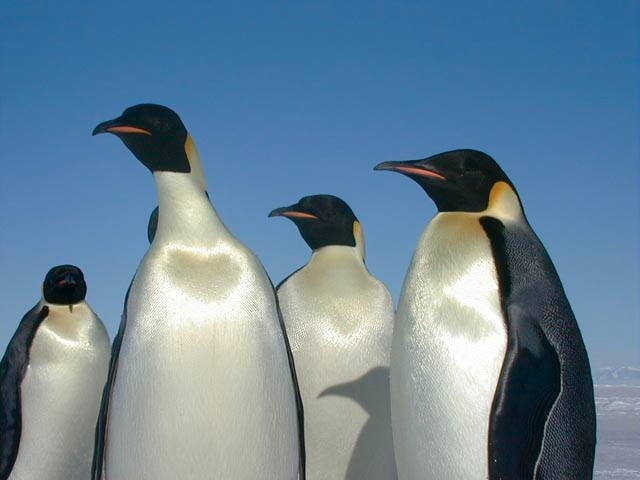Turtle Species’ Conservation Success
Analysis of conservation efforts in the Amazon and Orinoco basins has revealed that a total of 85 past or present projects has helped to conserve 147,000 female South American River Turtles.
 Image: By P.Lindgren (Own work) [CC BY-SA 3.0 (http://creativecommons.org/licenses/by-sa/3.0)], via Wikimedia Commons
Image: By P.Lindgren (Own work) [CC BY-SA 3.0 (http://creativecommons.org/licenses/by-sa/3.0)], via Wikimedia Commons Some good news has come out of South America, with new research revealing conservation success. By analysing records in countries of the Amazon and Orinoco basins, which include Brazil, Venezuela, Colombia, Bolivia, Peru and Ecuador, scientists have categorised 85 past and present initiatives or projects that work to preserve the South American River Turtle, or charapa, a critically endangered species. These projects are protecting more than 147,000 female turtles across the basin, an unprecedented figure.
The paper “On the future of the giant South American river turtle, Podocnemis expansa” was published in the journal Oryx, and was drafted by 29 Latin American researchers and scientists. The collaboration stems from a 2014 workshop held in Balbina, Brazil in which park rangers, indigenous people, and conservationists from the six countries provided information on their work to protect the charapa. The efforts discussed in that continental meeting and subsequent study reveal the serious commitment of public and private entities to conserve the species.
The charapa is considered the largest river turtle in South America and feeds primarily on plant material. It inhabits the tributaries of the Amazon and Orinoco river basins, and is an important cultural symbol for many communities in the region. It also has great ecological importance for ecosystems, as it helps transport fruits and seeds along the rivers and serves as prey for birds, catfish, foxes, jaguars, alligators, and water dogs. In the twentieth century, hundreds of thousands of turtles spawned on beaches throughout the continent.
Despite their local importance and past abundance, turtle populations are still threatened by the hunting and collection of adults and juveniles, looting of nests, the illegal trafficking of hatchlings to be used as pets, and the use of inappropriate fishing gear which can harm or kill individuals. In addition, broader degradation of their habitat is contributing to their decline. The species was not considered threatened overall by the International Union for the Conservation of Nature (IUCN) in 1996 (the year of the last full review) but it has declined drastically. The IUCN Species Survival Commission—Tortoise and Freshwater Turtle Specialist Group recommended that it should be considered critically endangered in 2011. At the main known nesting beaches, it is estimated that the number of nests fell from 34,000 in 1963 to 4,700 in 1981 – by the early 2000s it had fallen to 700–1300.
Germán Forero, Scientific Director with Wildlife Conservation Society (WCS) Colombia and lead author, called for the creation of a protection network for the charapa – a regional monitoring program that would link technical information and lessons learned among all the projects in the six countries. He noted the importance of communities in this future network: “The participation of local communities that live with the charapa is essential to protecting them. They live side by side with the turtles and are interested in controlling or preventing the commercialisation of eggs or meat to ensure the ongoing sustainability of the species as a food source and important part of their culture.”
Camila Ferrara, co-author and researcher with WCS Brazil, added that the formation of this network would be extraordinary, because it would allow stakeholders to design and assess methodologies for management and conservation of the species, from its gestation and protection of nesting beaches to population monitoring.
In Brazil, the charapa is not considered critically endangered, but a near-threatened species. Ferrara explains that although Brazil is home to important populations of the species, the turtle is still the second most consumed vertebrate group in the Amazon, surpassing even some fish. Therefore, she believes that the network should focus their efforts on strengthening environmental education in Brazil to ensure the sustainability of the reptile’s consumption.
Ferrara said: “We are seeing positive results as work progresses, as communities are expressing greater interest in working with turtles. We have seen a decrease in the consumption of eggs, an important achievement that we must replicate throughout the continent.”
The paper highlights the importance of the monitoring conducted by the Brazilian Institute of the Environment and Renewable Natural Resources (IBAMA), which provides the only way to assess the trends of populations over time and thus is valuable information for decision-making on the species.
In Colombia, initiatives are working to protect at least two large populations, one in the Caquetá River in the Amazon basin and another in the Meta River in the Orinoco basin. In both areas, local communities are committed to protecting the nesting females at beaches, and these programmes are expected to receive continued support over time.
Going forward, the proposed network plans to develop a platform that can serve as an observatory of the species, tracking population trends across the basin over time to prioritize intervention sites and ensure the long term conservation of the species.
This paper reviews a diversity of initiatives that seek to recover these turtle populations. Rick Hudson, President of the Turtle Survival Alliance (TSA), believes that interest in protecting the charapa in South America comes at an opportune moment, as there are still robust populations of river turtles to protect; this is not the case in Asia, where many of turtle species have gone extinct.
Hudson concludes: “The lesson is clear: protect the habitat and large nesting aggregations of river turtles now and avoid crisis management in the future. This paper makes a strong case for improving levels of protection while there is still time.”





Sorry, comments are closed on this post